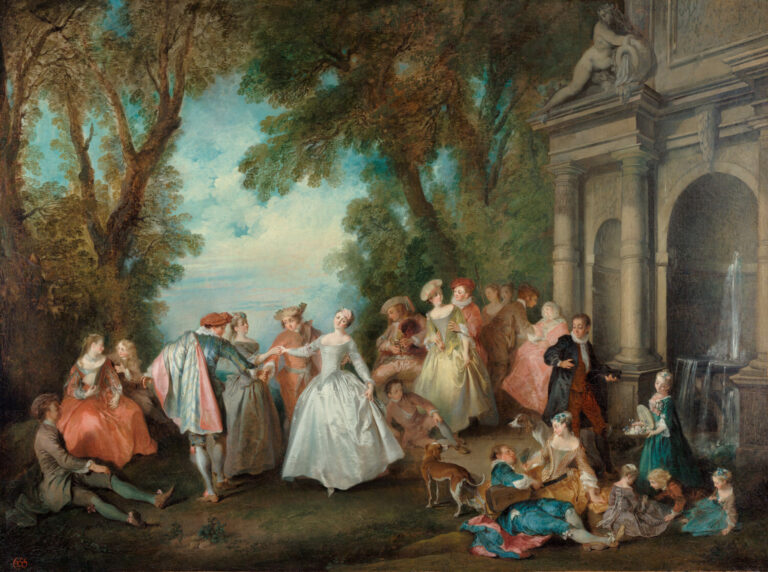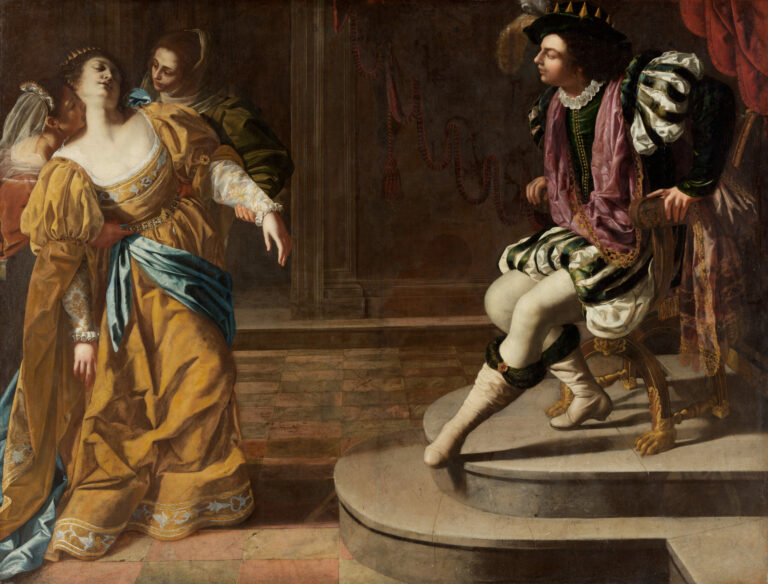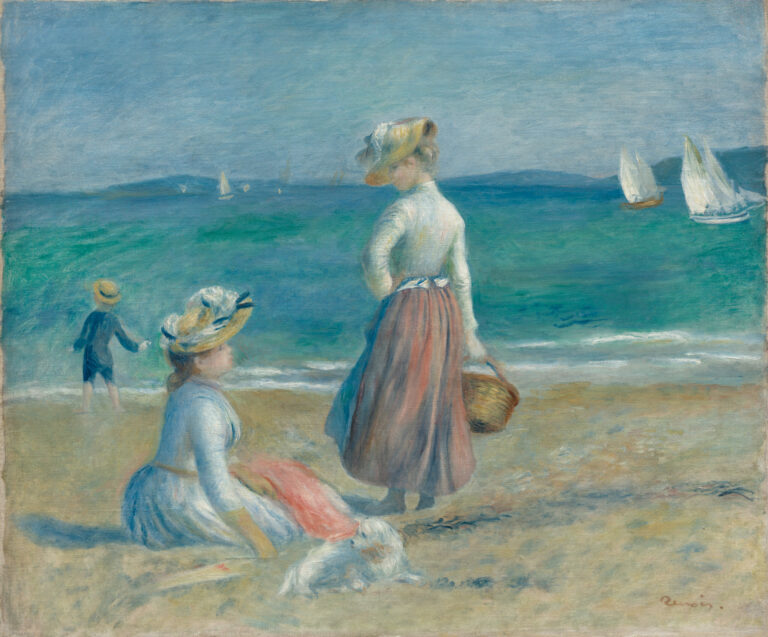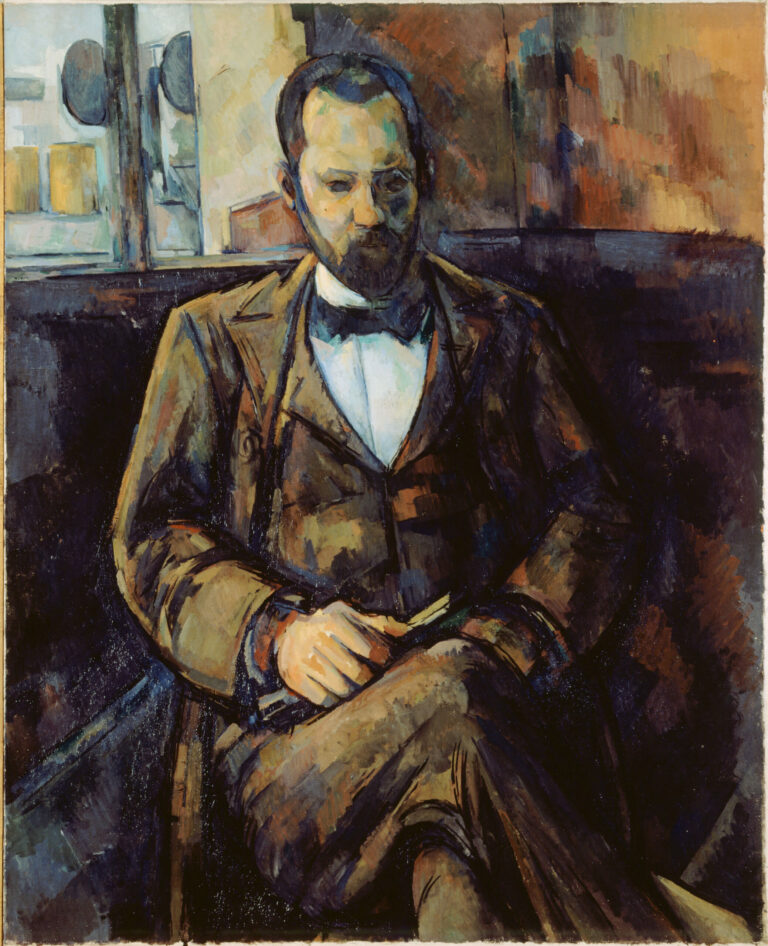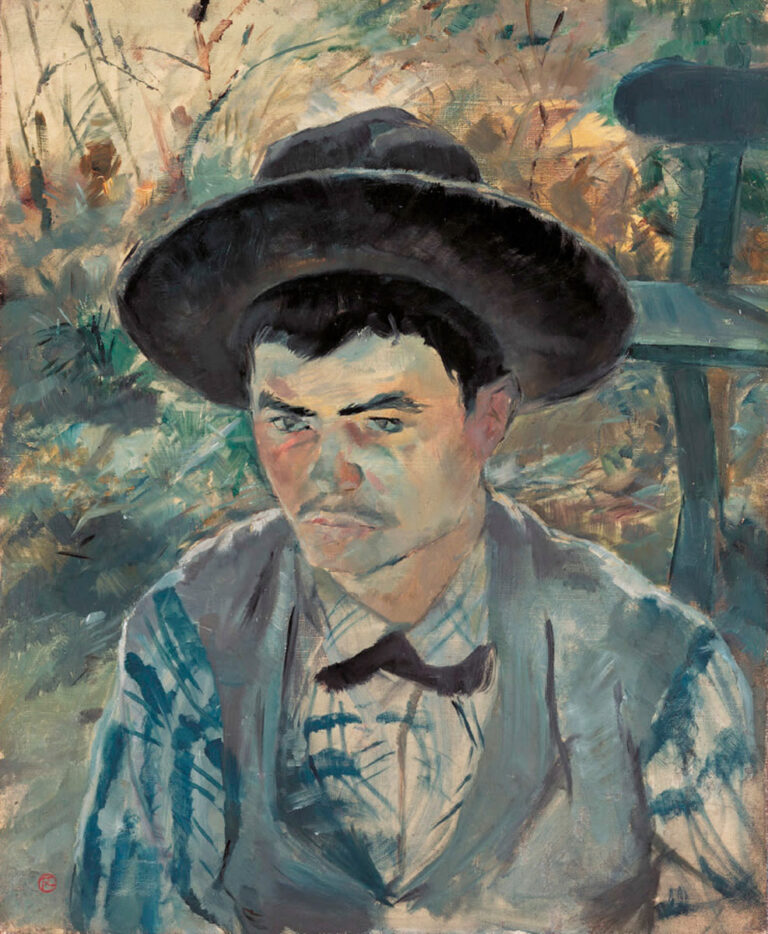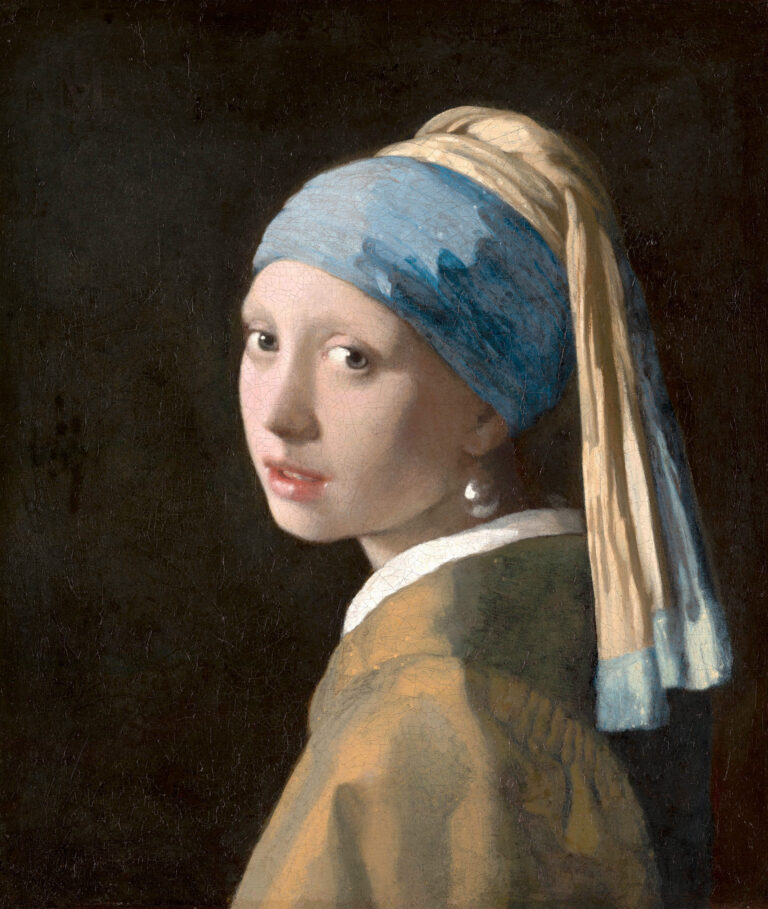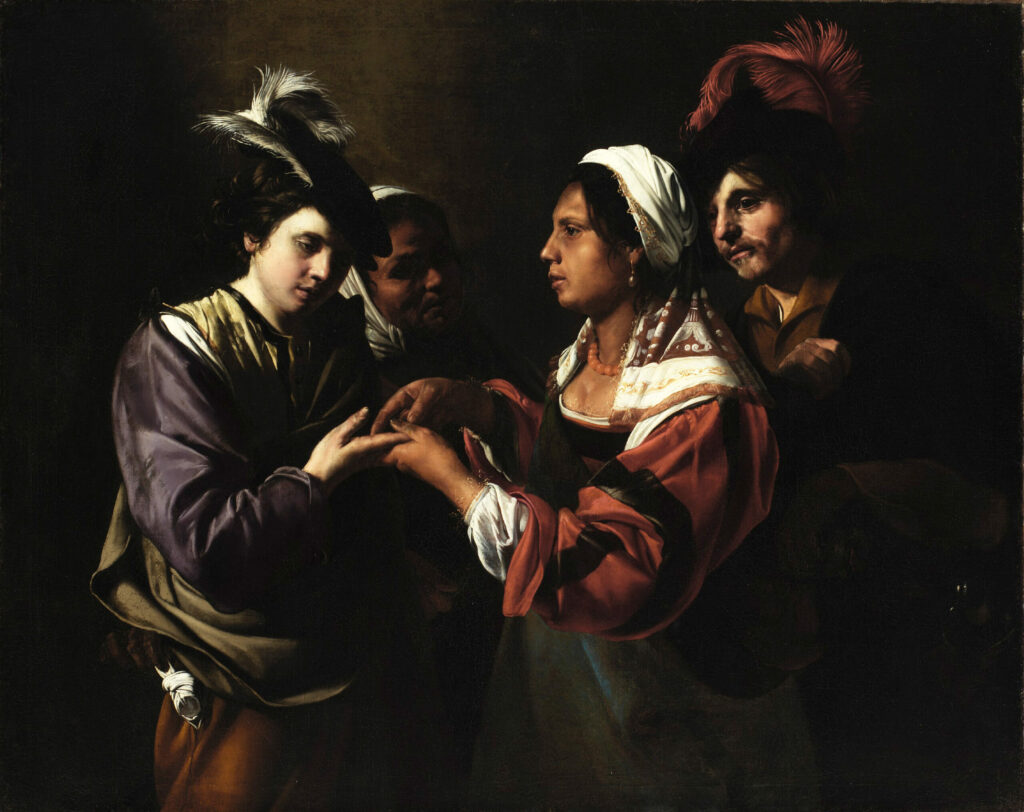
In the theatrical shadows that envelop this scene, Manfredi presents us as spectators to a human comedy with the overtones of moral tragedy.
Emerging from profound darkness, four figures animate a subtle game of illusion and deception. At center, a young Romani woman in vermillion robes grasps the hand of an elegantly dressed young man adorned with extravagant feathers, absorbed in the predictions she whispers to him. His curiosity about the future blinds him to the present: while she pretends to read his destiny, her accomplice subtly pilfers the naive gentleman’s purse. Yet she remains unaware that she herself is being robbed from behind of her fowl.
The composition concentrates all dramatic tension in the contact of hands. Caravaggesque chiaroscuro sculpts faces and gestures with almost palpable intensity, causing flesh and precious fabrics to emerge from the darkness with startling vitality.
Object Information
- Artist: Bartolomeo Manfredi
- Title: The Fortune Teller, c. 1616-1617
- Medium: Oil on canvas
- Dimensions: 122.2 × 154.4 cm (48.1 × 60.8 inches)
- Collection: Detroit Institute of Arts, Founders Society Purchase, Acquisitions Fund, 79.30
- https://dia.org/collection/fortune-teller-53312
Bartolomeo Manfredi (1582-1622) represents an essential yet long-overlooked figure of European Caravaggism, embodying the legacy of the Lombard master whose most brilliant followers he numbered among. Born in Ostiano near Mantua and trained between Lombardy and Rome, he developed a style so closely aligned with Caravaggio’s that many of his works were long attributed to his illustrious model.
More than a mere imitator, Manfredi successfully codified and systematized the Caravaggesque approach, creating an influential pictorial language that spread throughout Europe. A specialist in genre scenes featuring half-length figures against dark backgrounds, he played a crucial role in popularizing this aesthetic among wealthy collectors while infusing his compositions with a distinctly personal psychological dimension. Though he died prematurely at age 40, Manfredi is now recognized as the essential “translator” of Caravaggio’s revolutionary style.

